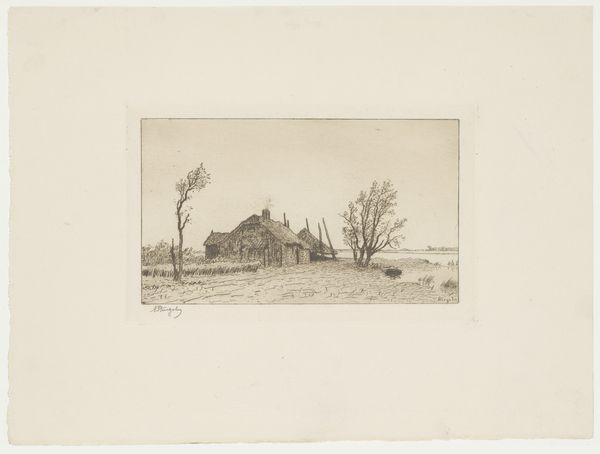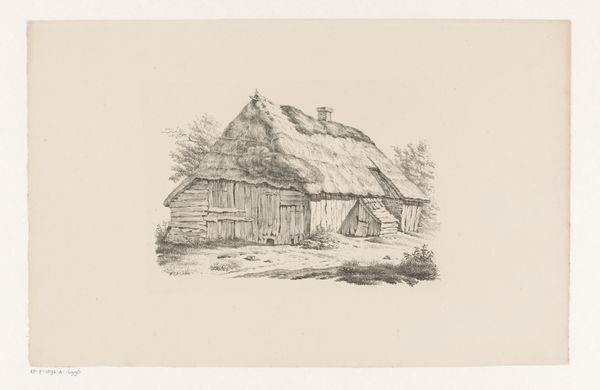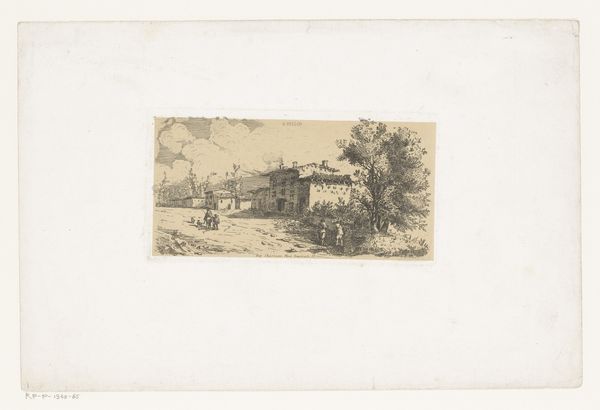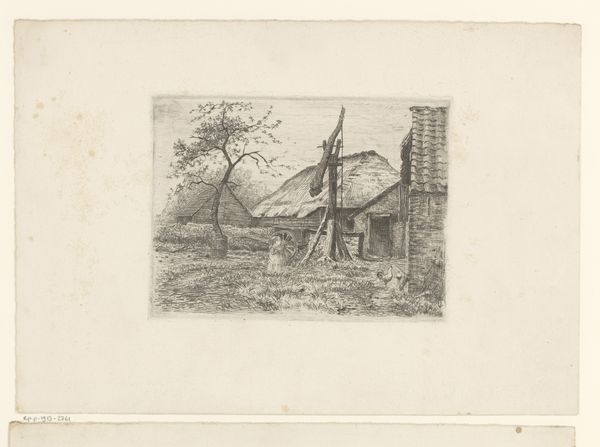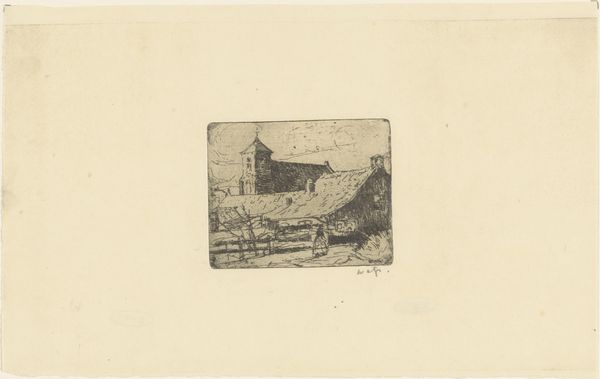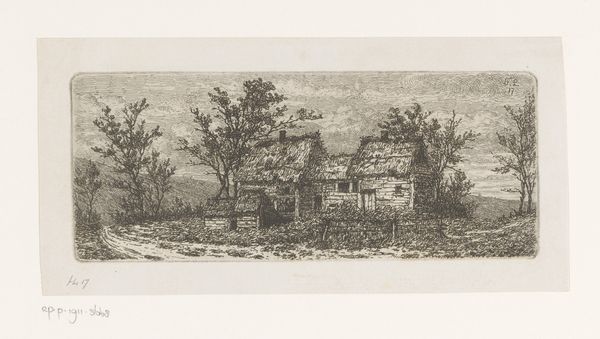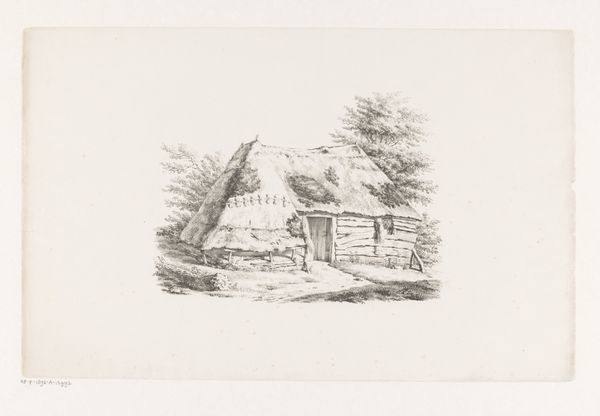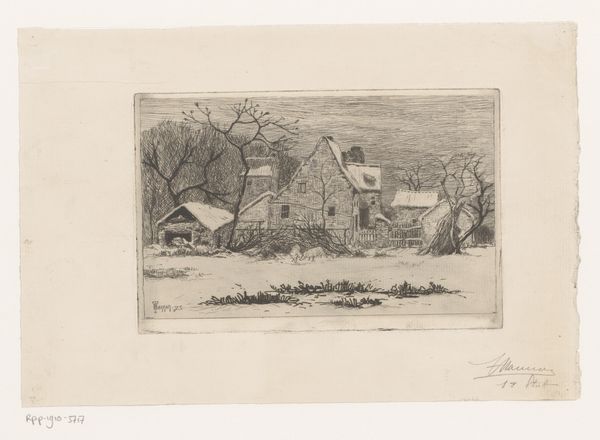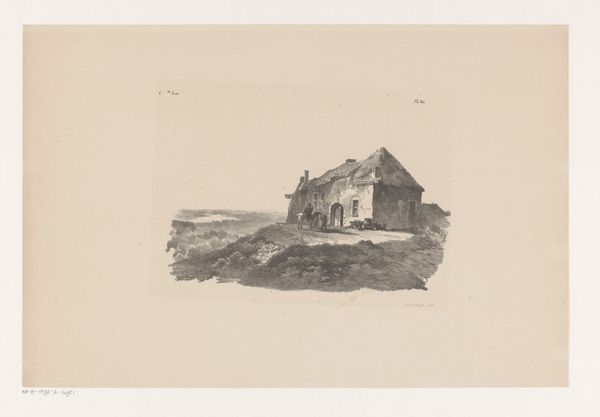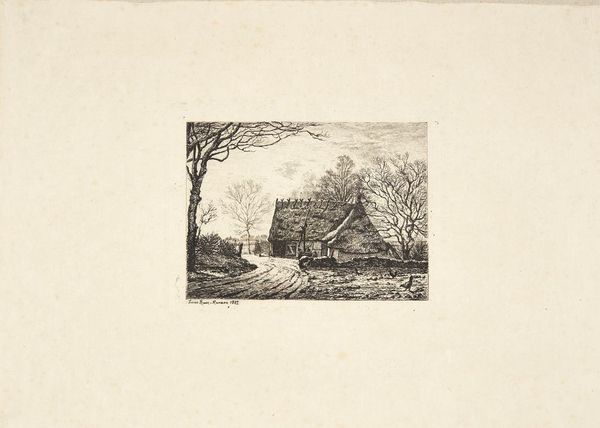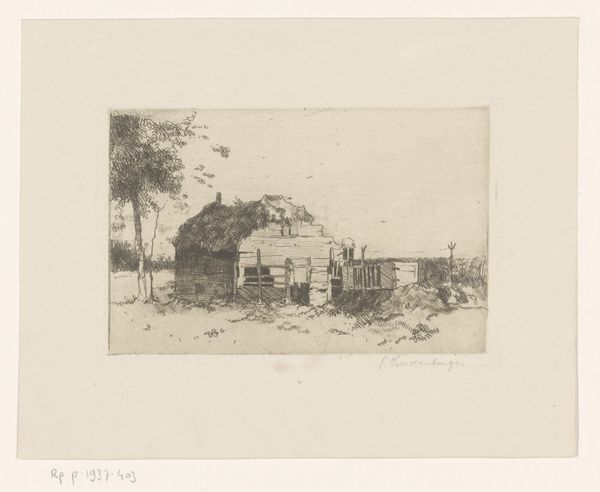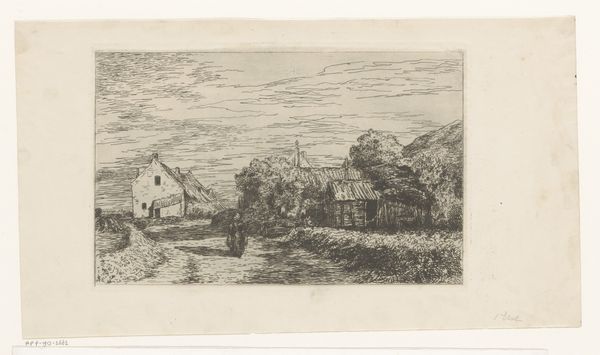
print, etching
# print
#
etching
#
landscape
#
genre-painting
#
realism
Dimensions: height 137 mm, width 175 mm
Copyright: Rijks Museum: Open Domain
Curator: This etching, "Boerin voor een boerderij," which translates to "Farmer's Wife in Front of a Farmhouse," is by Louis Adolphe Jacobs and was created sometime between 1865 and 1910. It resides here at the Rijksmuseum. Editor: It's wonderfully atmospheric, isn’t it? That hazy, almost dreamlike quality achieved with all those tiny, scribbled lines…It gives the scene such a gentle, rustic feeling. Like a half-remembered childhood memory. Curator: I agree. The subject matter fits perfectly with the etching style, which was at the time having something of a popularity rebirth. Etching allowed for incredibly fine details. Think of it as capturing fleeting moments with a profound sense of depth. Editor: You can almost feel the damp earth and smell the wood smoke! For me, thatched roofs always symbolize resourcefulness and tradition. Think about how many generations probably lived under that very roof. The image is not so much about depicting a specific place but evoking a way of life— a very human way of being. Curator: The lone figure of the woman framed by the doorway also adds to this feeling, right? Editor: Absolutely! And she is presented as just part of the scene: a working component, not dominant or necessarily individually representative. She’s less an individual, and more an echo, somehow. It's that delicate balance that gives the etching its soul. Curator: In this genre of paintings we have to appreciate how artists were striving for authentic portrayals of daily life, away from romanticized notions of rural existence. Jacobs' work is definitely a beautiful example of how artists balanced realism and the sentimental. Editor: I'd have to agree! Thanks for allowing a closer inspection; there's almost an ethereal glow as one considers what "home" represents, even today! Curator: Glad to share it. These types of detailed works always require a slow gaze to pick up the nuance of expression and that sense of humanity we all carry within.
Comments
No comments
Be the first to comment and join the conversation on the ultimate creative platform.

